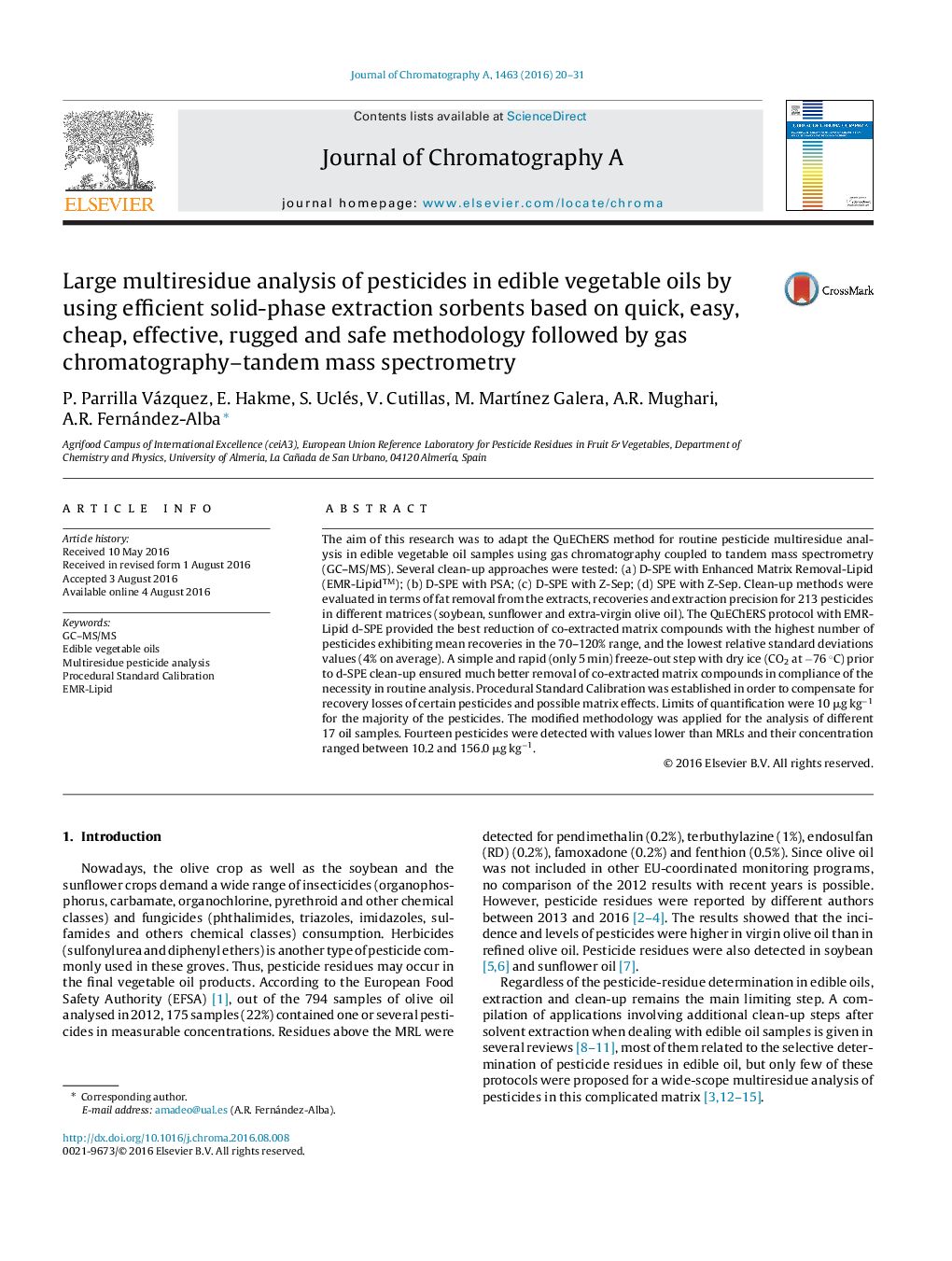| Article ID | Journal | Published Year | Pages | File Type |
|---|---|---|---|---|
| 1198327 | Journal of Chromatography A | 2016 | 12 Pages |
•Multiresidue method for edible vegetable oils using GC–MS/MS.•Evaluation of different sorbents for the clean-up step using QuEChERS methodology.•Comparison of the novel EMR-Lipid sorbent with Z-Sep and PSA.•Procedural Standard Calibration to correct recovery losses.•Several pesticides are detected in most of the olive oil samples.
The aim of this research was to adapt the QuEChERS method for routine pesticide multiresidue analysis in edible vegetable oil samples using gas chromatography coupled to tandem mass spectrometry (GC–MS/MS). Several clean-up approaches were tested: (a) D-SPE with Enhanced Matrix Removal-Lipid (EMR-Lipid™); (b) D-SPE with PSA; (c) D-SPE with Z-Sep; (d) SPE with Z-Sep. Clean-up methods were evaluated in terms of fat removal from the extracts, recoveries and extraction precision for 213 pesticides in different matrices (soybean, sunflower and extra-virgin olive oil). The QuEChERS protocol with EMR-Lipid d-SPE provided the best reduction of co-extracted matrix compounds with the highest number of pesticides exhibiting mean recoveries in the 70–120% range, and the lowest relative standard deviations values (4% on average). A simple and rapid (only 5 min) freeze-out step with dry ice (CO2 at −76 °C) prior to d-SPE clean-up ensured much better removal of co-extracted matrix compounds in compliance of the necessity in routine analysis. Procedural Standard Calibration was established in order to compensate for recovery losses of certain pesticides and possible matrix effects. Limits of quantification were 10 μg kg−1 for the majority of the pesticides. The modified methodology was applied for the analysis of different 17 oil samples. Fourteen pesticides were detected with values lower than MRLs and their concentration ranged between 10.2 and 156.0 μg kg−1.
